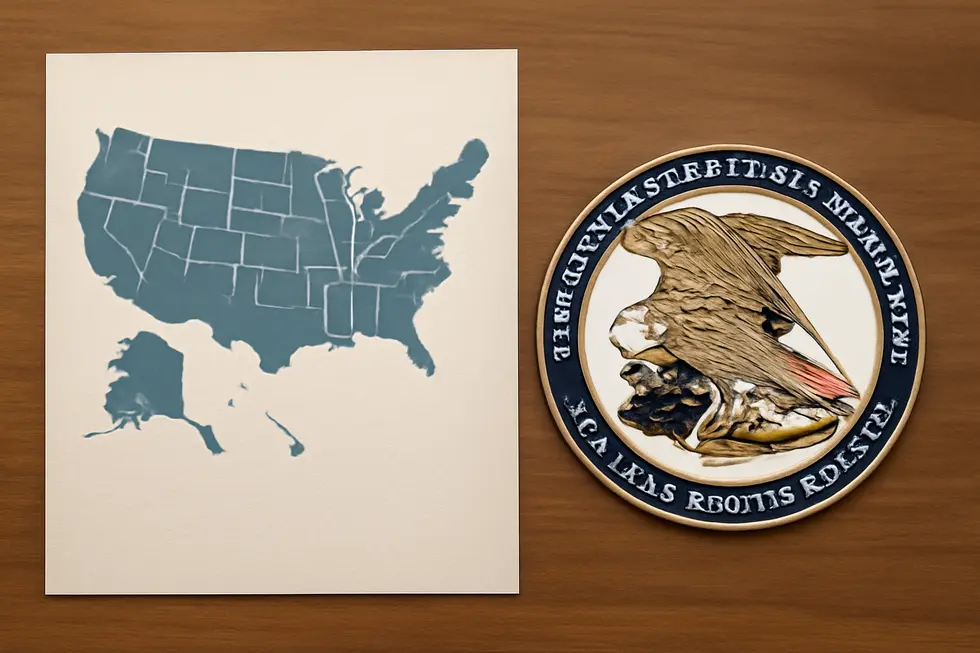Introduction
Protecting your business name and logo is critical to maintaining your brand’s integrity and competitive edge. Without proper safeguards, others might copy or misuse your identity, leading to loss of reputation and revenue. Understanding how to secure exclusive rights through trademark availability searches and registrations forms the foundation of protection. Beyond registration, you need to consider whether state or federal trademark protection is best suited for your business scope. Additionally, your online presence—including domains and social media handles—requires vigilant safeguarding as an extension of your brand identity. Finally, knowing how to actively enforce your trademark rights ensures your business remains shielded from infringement. Each of these elements works together to provide a comprehensive strategy, empowering business owners to confidently protect their name and logo.
Tables of Contents
Chapter 1: How do I protect my business name and logo through trademark availability searches and registration
- Mastering Comprehensive Searches for Trademark Availability to Secure Your Business Name and Logo
- Mastering the Trademark Application Journey: Securing Your Business Name and Logo with Confidence
- Building a Comprehensive Brand Defense: Beyond Trademark Registration to Ongoing Protection and Enforcement
Chapter 2: Choosing Between State and Federal Trademark Registration to Guard Your Business Name and Logo
- Balancing Local and Nationwide Trademark Protection for Your Business Identity
- Balancing Legal Reach and Business Growth: Weighing State versus Federal Trademark Protection
- Balancing Local Reach and National Ambitions: Choosing Between State and Federal Trademark Protection
Chapter 3: How do I protect my business name and logo by safeguarding related digital assets
- Securing Your Brand Identity: Trademark Registration and Active Enforcement for Digital and Legal Protection
- Securing Domain Names and Social Media Handles to Strengthen Your Brand Protection
- Harnessing AI and Emerging Technologies to Vigilantly Protect Your Business Name and Logo Online
Chapter 4: How to Legally Enforce Trademark Rights to Protect Your Business Identity
- Building a Strong Legal Foundation: Trademark Registration and Enforcement for Your Business Name and Logo
- Vigilant Trademark Monitoring and Proactive Response to Protect Your Brand Identity
- Sustaining Trademark Protection: Enforcement and Ongoing Maintenance Strategies
Chapter 1: How do I protect my business name and logo through trademark availability searches and registration

1. Mastering Comprehensive Searches for Trademark Availability to Secure Your Business Name and Logo
Before registering a trademark, conducting a thorough trademark availability search is essential to ensure your business name and logo are free from conflicts. This process requires checking official trademark databases like the United States Patent and Trademark Office (USPTO), where you can search both word marks and design marks using classification codes. Equally important is searching at the state level since trademarks registered within states may affect your rights and lead to disputes despite a clear federal search. For global ambitions, international tools such as the World Intellectual Property Organization’s Global Brand Database provide insight into trademarks across multiple countries, helping avoid unexpected infringements.
Beyond government databases, verifying domain names and social media handles helps protect your brand’s consistency and digital identity, though these are not formal trademark protections. Carefully analyzing search results allows you to identify similar or identical marks that could block your registration or create legal issues. If you find potential conflicts, it’s wise to adjust your branding to stronger, more distinctive alternatives.
Given the complexities involved, enlisting expert guidance from a trademark attorney can improve search accuracy, help select classifications, assist with application preparation, and navigate possible challenges post-filing. This proactive searching approach greatly increases the chance of a successful federal registration, which ultimately grants exclusive rights and legal protections to safeguard your business’s identity.
For additional details on performing effective trademark searches and filings, refer to this comprehensive guide on trademark search and registration.
2. Mastering the Trademark Application Journey: Securing Your Business Name and Logo with Confidence
Successfully securing your business name and logo through trademark registration begins with a strategic approach to the application process. Initially, conduct a meticulous search using the USPTO’s Trademark Electronic Search System (TESS) to confirm your mark’s uniqueness and avoid conflicts. Once cleared, choose the appropriate application form via the USPTO’s Trademark Electronic Application System (TEAS)—either TEAS Plus for lower fees with stricter requirements, or TEAS Standard offering more flexibility. Your application must clearly describe the exact mark, the goods or services it represents, and the filing basis, whether actual use or intent to use.
Upon submission with the required fees, your application enters examination by the USPTO where an examiner carefully reviews it for compliance and conflicts. This examination phase may last between eight and eighteen months and can involve receiving Office Actions, which require timely, thorough responses to address potential objections or requests for clarification. Successfully navigating this stage leads to trademark registration, granting you exclusive rights to your business name and logo nationwide. This protection empowers you to legally prevent others from using confusingly similar marks, preserving your brand’s integrity.
While federal registration offers broad protection, it is important to understand its interplay with state-level registrations and ongoing enforcement duties. Consulting a trademark attorney can streamline complex steps and safeguard your interests. For comprehensive direction on this vital process, refer to US trademark registration guidance. Additionally, to deepen your understanding of protecting your business name and logo, explore insights on trademark protection for business names and logos.
3. Building a Comprehensive Brand Defense: Beyond Trademark Registration to Ongoing Protection and Enforcement
Protecting your business name and logo effectively requires more than simply registering a trademark—it demands a strategic and layered approach. This starts with conducting exhaustive trademark availability searches, covering federal databases, state records, and common law sources, to confirm that your mark is unique and avoid costly legal conflicts. Beyond federal registration, securing trademarks at the state level or for secondary brand elements like slogans, packaging designs, and product names further solidifies your brand’s defenses and adapts to evolving market needs. Equally crucial is implementing ongoing monitoring systems to identify potential infringing marks and to keep registrations current through timely renewals. Active enforcement forms the backbone of sustained protection—issuing cease-and-desist letters and pursuing legal remedies when unauthorized use arises helps maintain your exclusive rights and deters infringement. Engaging knowledgeable trademark attorneys throughout this process enhances your ability to navigate complex challenges, from comprehensive clearance searches to managing oppositions or disputes before the Trademark Trial and Appeal Board (TTAB). This multi-faceted strategy ensures your business identity remains secure not just at the point of registration but throughout your brand’s lifespan, safeguarding its integrity and value in a competitive marketplace. For an in-depth understanding of protecting your trademarks through common law rights, explore common law trademark rights.
Reference: https://www.upcounsel.com/common-law-trademark
Chapter 2: Choosing Between State and Federal Trademark Registration to Guard Your Business Name and Logo

1. Balancing Local and Nationwide Trademark Protection for Your Business Identity
Protecting your business name and logo effectively requires understanding the distinct advantages of state versus federal trademark registration. Registering at the state level typically offers quicker, less expensive protection localized within that state’s borders. This approach suits businesses operating primarily in one state or those seeking immediate, affordable brand security. However, such protection is geographically limited and restricts legal remedies to state courts.
Federal trademark registration through the United States Patent and Trademark Office (USPTO) elevates your protection to a nationwide scope. Securing a federal trademark grants exclusive rights to use your mark across the entire country, presumes ownership legally, and enables enforcement in federal courts. Additionally, federal registration allows you to display the ® symbol and provides enhanced remedies against infringement, such as potential treble damages and coverage against counterfeit imports through U.S. Customs enforcement.
While federal registration involves higher costs and a lengthier approval process, it preserves your priority in expanding markets and strengthens your brand’s legal foundation. Many entrepreneurs begin with state registration to establish local rights quickly and later pursue federal registration as their business grows or plans to enter broader markets.
To maximize protection, consider registering both your business name and logo, as trademarks apply individually to each element of your brand identity. Regardless of your approach, conducting comprehensive searches at both state and federal levels before filing is crucial to avoid conflicts. Complement these registrations with securing matching domain names and social media handles to maintain consistent online presence.
For tailored advice, consulting an intellectual property attorney will enhance your strategic protection and enforcement efforts. This balanced understanding ensures your brand remains safeguarded, whether operating locally or expanding nationally. For more details on the differences in trademark protections, see common law trademark rights.
2. Balancing Legal Reach and Business Growth: Weighing State versus Federal Trademark Protection
Choosing between state and federal trademark registration involves critical legal and economic trade-offs that impact how effectively you protect your business name and logo. State registration confines your protection to the borders of a single state, offering a faster and less expensive option. This suits small, local businesses seeking immediate but limited scope. However, the downside is that your exclusive rights end at that state’s boundaries, providing no leverage if similar marks emerge elsewhere.
Federal registration through the USPTO, while more costly and time-consuming, conveys nationwide rights. This broad legal reach lets you prevent others from using confusingly similar marks anywhere in the U.S., enhancing your ability to enforce your rights in federal courts. The legal presumption of ownership that accompanies federal registration also strengthens your position against infringement and gives you rights to use the ® symbol, boosting brand credibility.
Economically, federal registration increases your business’s intangible asset value. It facilitates licensing and franchising, attracting potential investors by projecting a legally protected and stable brand image. This is particularly crucial when expanding beyond local markets or engaging in online commerce, where state protections prove insufficient.
Many startups begin with state registration to control costs but later elevate their protection by filing federally to secure broader legal and economic benefits. For a strategic approach and detailed legal guidance, consult resources like the USPTO website and consider expert counsel specializing in trademark law. This ensures your brand grows safeguarded both locally and nationwide.
For further insights on comprehensive trademark protection strategies, explore this trademark protection guide for business name and logo.
Reference: ZenBusiness – Register a Trademark
3. Balancing Local Reach and National Ambitions: Choosing Between State and Federal Trademark Protection
When deciding how to protect your business name and logo, understanding the strategic balance between state and federal trademark registration is essential. State trademarks grant exclusive rights within a single state, typically at a lower cost and with faster approval times, making them attractive for businesses with a purely local focus. However, this protection offers limited enforcement confined to that state’s borders.
In contrast, federal trademark registration through the USPTO secures nationwide protection and allows your business to use the ® symbol, signaling stronger brand legitimacy. Federal registration also opens access to federal courts for enforcement, which can yield more significant remedies against infringers. For businesses planning to sell products online, expand across state lines, or eventually reach international markets, federal registration minimizes risks of conflicting marks and supports broader growth opportunities.
Many entrepreneurs adopt a phased approach: securing a state trademark initially to establish early local rights and then pursuing federal registration as the business expands. Nevertheless, if your ambitions include establishing a strong online presence or entering multiple markets from the outset, federal trademark registration is the more strategic choice.
Careful availability searches in both state and federal databases will avoid conflicts, and consulting with an intellectual property attorney can help align the registration approach with your business goals. For a deeper understanding of how trademark rights extend beyond registration, review this detailed discussion on common law trademark rights.
More details on this are provided by the United States Patent and Trademark Office here.
Chapter 3: How do I protect my business name and logo by safeguarding related digital assets

1. Securing Your Brand Identity: Trademark Registration and Active Enforcement for Digital and Legal Protection
Protecting your business name, logo, and related digital assets begins with securing trademark rights through registration and maintaining vigilant enforcement. Before submitting a trademark application, it’s vital to conduct comprehensive searches using resources like the USPTO database to confirm your mark’s uniqueness and avoid conflicts. Filing a federal trademark grants you exclusive nationwide rights in the relevant classes tied to your goods or services, typically taking 6 to 18 months and involving fees around $250 to $350 per class.
While state registration provides localized protection, federal registration offers stronger legal benefits spanning all states. Complementing registration, securing domain names and social media handles aligned with your trademark helps prevent cybersquatting and reinforces consistent brand presence online. Employing technological safeguards such as digital watermarks or encryption can further protect digital files associated with your brand.
Active monitoring is essential to detect unauthorized uses or counterfeit products early, enabling you to send cease-and-desist notices or pursue legal proceedings if necessary. Such enforcement efforts preserve your trademark’s distinctiveness and market value. Engaging legal professionals specializing in trademarks can streamline this process, ensuring proper application filing and effective defense of your rights over time.
This integrated approach—combining federal trademark protections with diligent digital asset security and timely enforcement—establishes a robust defense for your brand identity and its digital footprint. For detailed guidance on trademark protection for business names and logos, consider visiting trademark protection for business name and logo.
Additional information is available through the official USPTO website.
2. Securing Domain Names and Social Media Handles to Strengthen Your Brand Protection
Protecting your business name and logo extends beyond legal trademark registration to securing crucial digital assets like domain names and social media handles. After establishing your trademark rights with the USPTO, promptly registering domain names that align with your business name is essential. This step prevents cybersquatting and brand impersonation while establishing your official online presence. Consider acquiring multiple extensions—such as .com, .net, and .org—and common misspellings to avoid confusion or fraud. Parallel to this, consistently claiming your business name on major social media platforms prevents others from misusing or impersonating your brand, helping maintain a unified identity across digital channels.
Besides legal protections, safeguarding your visual identity through internal brand guidelines strengthens control over how your logo and name appear publicly. These policies ensure consistent and authorized usage, reducing risks of dilution or misrepresentation. Performing comprehensive searches of existing digital names and handles using tools like WHOIS and Namechk prior to registration helps avoid conflicts and streamlines your digital presence strategy. Together, federal trademark registration combined with proactive digital asset management creates a robust shield that defends your brand’s integrity in both legal and online environments.
For a detailed legal foundation supporting brand identity protection, consult resources such as company trademarks and logos.
Reference: https://www.crazyegg.com/blog/how-and-when-to-trademark-a-business-name/
3. Harnessing AI and Emerging Technologies to Vigilantly Protect Your Business Name and Logo Online
Protecting your business name and logo effectively requires a dual approach that marries strong legal foundations with cutting-edge digital vigilance. After securing federal trademark registration through the USPTO, the ongoing challenge lies in shielding your digital assets from unauthorized use and infringement across countless online platforms. Begin with manual efforts like setting up Google Alerts for your brand terms and conducting reverse image searches to identify unauthorized logo uses. Regularly scanning social media and industry sites uncovers impersonators or counterfeit sellers.
Yet, manual monitoring alone is not sufficient. Advanced AI-powered brand protection tools harness machine learning to continuously scan millions of websites, social media accounts, domain registrations, phishing sites, and counterfeit product listings in real time. These automated systems detect potential violations swiftly, enabling prompt takedown requests or legal action to defend your brand’s integrity. Further leveraging emerging technologies, some AI-driven enforcement services provide comprehensive, multi-platform oversight that identifies fake profiles and malicious links targeting your reputation, then trigger automatic alerts for rapid response.
Integrating these modern digital safeguards with robust legal trademark protection creates a dynamic defense system. By proactively combining trademark registration with automated online monitoring technologies, you ensure your business name and logo remain uniquely yours, protected against infringement that could erode your brand value or consumer trust.
For more insight on how federal trademark protections support your brand identity, explore this guide on trademark protection for business names and logos.
Chapter 4: How to Legally Enforce Trademark Rights to Protect Your Business Identity

1. Building a Strong Legal Foundation: Trademark Registration and Enforcement for Your Business Name and Logo
Securing your business name and logo begins with establishing a strong legal foundation through trademark registration. Registering with the United States Patent and Trademark Office (USPTO) grants you exclusive nationwide rights, protecting your brand identifiers against unauthorized use. This process starts by choosing a distinctive mark and conducting comprehensive searches to avoid conflicts with existing trademarks. Filing a detailed application with the USPTO includes classifying your goods or services and submitting evidence of commercial use. Throughout examination, you must promptly address any office actions to maintain momentum.
Beyond registration, active enforcement is critical. Monitoring the marketplace for potential infringements and confusingly similar marks can prevent brand dilution. When infringements arise, sending cease-and-desist letters is often the first step, followed by opposition filings to challenge conflicting trademarks during their registration phase. If necessary, legal action may be pursued to uphold your rights. Additionally, recording your trademark with customs can block counterfeit goods from entering the market, further preserving your brand’s integrity.
Choosing federal registration offers broad protection, but state registrations can supplement localized enforcement. Maintaining your trademark requires timely renewals and vigilant oversight. Engaging a skilled trademark attorney ensures you navigate registration complexities and enforce your rights effectively. For a deeper dive into protecting your business name and logo through trademark laws, consult specialized resources like this complete guide on trademark protection.
Effectively registering and enforcing your trademark solidifies your brand’s legal safeguards, enhancing its value and credibility in the marketplace.
2. Vigilant Trademark Monitoring and Proactive Response to Protect Your Brand Identity
Protecting your business name and logo extends beyond registration—it demands continuous vigilance to detect and respond to infringement. Effective enforcement begins with consistent monitoring across multiple platforms, including federal and state trademark databases, online marketplaces, domain registrations, social media, and general internet searches. Early detection of unauthorized or confusingly similar uses is critical to preventing damage to your brand’s distinctiveness and consumer trust.
While you can perform manual searches, subscribing to specialized trademark watch services automates this process by scanning USPTO filings and new domain registrations, promptly notifying you of potential conflicts. When infringement arises, timely action matters. Sending cease-and-desist letters early often curbs unauthorized use without escalating to litigation. However, persistent violations may require pursuing formal legal enforcement to uphold exclusive rights.
Ongoing surveillance also guards against brand dilution and counterfeiting, reinforcing your trademark’s value in the marketplace. Utilizing tools such as Google Alerts can complement professional monitoring efforts by identifying online mentions that may indicate misuse. Sustained diligence not only preserves your legal protections but also safeguards the investment you have made in your brand identity.
For more detailed insights on maintaining your trademark’s integrity through vigilant monitoring and enforcement, see this comprehensive resource on trademark monitoring and enforcement and learn how these strategies ensure your business name and logo remain uniquely yours. For foundational knowledge on protecting your brand assets, visit trademark protection for business name and logo.
3. Sustaining Trademark Protection: Enforcement and Ongoing Maintenance Strategies
Sustaining a registered trademark for your business name and logo requires vigilant enforcement and proactive maintenance to ensure your exclusive rights remain intact over time. This ongoing effort begins with regular trademark monitoring. By consistently checking federal and state trademark databases, online marketplaces, and domain registrations, you can detect unauthorized or confusingly similar uses early. Such diligence helps prevent your mark’s dilution, preserving its unique association with your brand.
Maintaining continuous commercial use of your trademark is equally critical. Trademark rights can be lost if the mark is not actively used in commerce, typically risking abandonment after three to five years without use. Alongside usage, meeting renewal requirements is essential: filings like the Declaration of Continued Use in the U.S. must be submitted timely—usually between the fifth and sixth year after registration—to keep your registration alive. Failure to submit renewals or pay maintenance fees can result in cancellation.
When infringements occur, prompt legal action is necessary. This often starts with cease-and-desist letters, progressing to oppositions or cancellation proceedings against conflicting marks if needed. Border enforcement can prevent counterfeit goods from entering the market, while litigation may become a last resort to assert your rights decisively. Collaborating with experienced trademark counsel helps evaluate enforcement risks and align strategies with your long-term brand goals, ensuring your trademark remains a strong, protected asset.
For practical guidance on continuous trademark monitoring, see UpCounsel’s Trademark Monitoring article. This resource offers valuable insights into effective surveillance methods that support your brand’s protection.
Learn more about protecting your business name and logo in depth at Trademark Protection for Business Name and Logo.
Final thoughts
Securing your business name and logo is a multi-faceted process that requires careful planning, registration, and ongoing vigilance. Starting with thorough trademark availability searches and official registration lays the legal groundwork for protection. Choosing between state and federal registration depends on your business reach and protection needs, with federal registration providing the strongest nationwide coverage. Complementing these steps by safeguarding your digital assets prevents unauthorized online use that can dilute your brand. Crucially, enforcing your trademark rights through active monitoring and legal actions ensures your business identity remains exclusive and uncontested. By integrating these strategies, business owners can confidently preserve the integrity and value of their brand, fostering long-term success and market trust.
Your IP is the foundation of your success – let’s protect it together before it’s too late. We can’t wait to help you turn your ideas into legally secured assets.
About us
undefined


